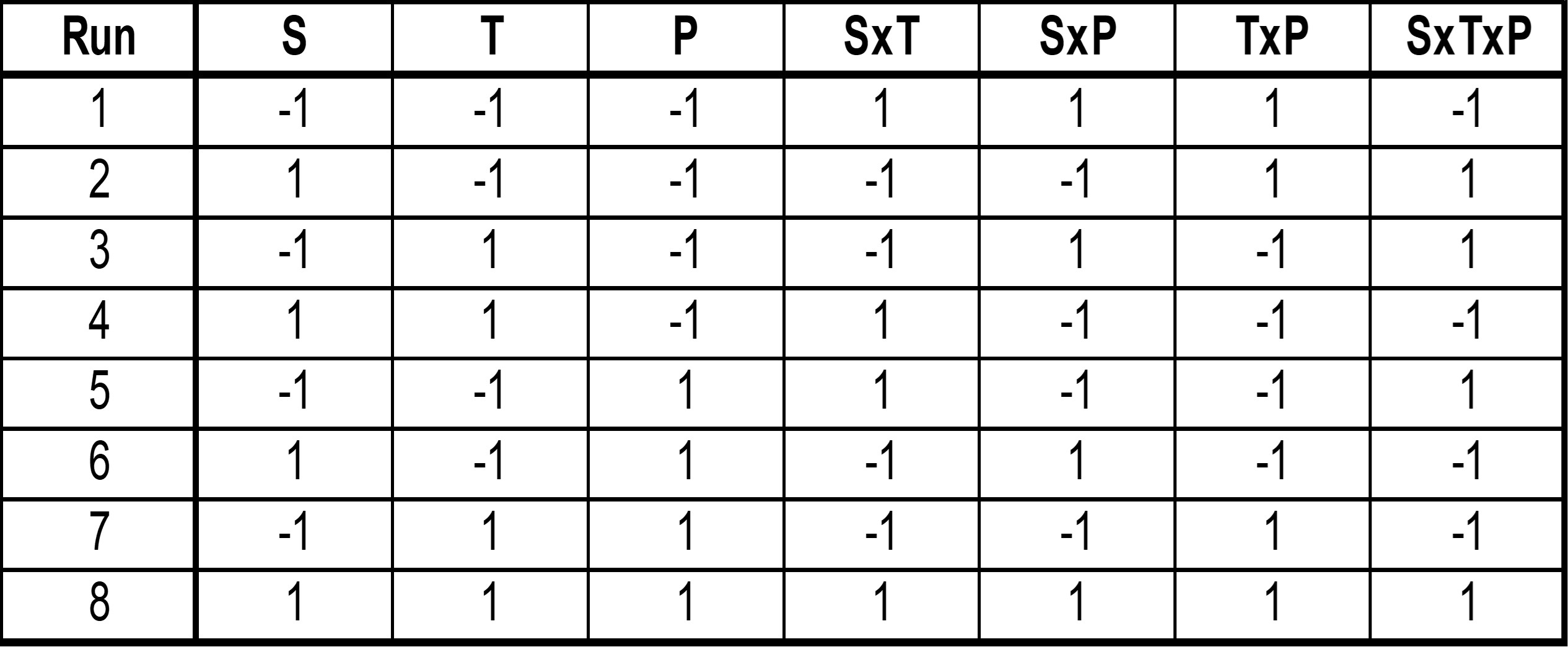
When talking about an alias, alias structure or aliasing, you are talking about Design of Experiments (DOE). More specifically, you are referring to the confounding of effects in a fractional factorial experiment.
Aliasing occurs when the estimate of a factor effect is difficult to distinguish because of the impact of other factors in your experiment. The description of all the possible aliased factors is defined in an alias structure.
Overview: What is an alias?
When you conduct a full factorial experiment, you will test all the possible unique combinations of your factors. This gives you a complete picture of the main effect of all your factors along with all the possible higher order interactions. There is no aliasing or confounding of factors. For example, if you wanted to run a 4 factor, 2 level experiment, you would have the following main effects plus the 2-way, 3-way and 4-way interaction effects:
A, B, C, D, AB, AC, AD, BC, BD, ABC, BCD and ABCD
But, if you wanted to only run a half fraction experiment, you would not test all possible combinations and therefore would be lacking complete information regarding the effects of your factors. This would result in an aliasing of your factors. Your main effects would be aliased with your 3-way and higher interactions, while your 2-way interactions would be aliased or confounded with other 2-way interactions.
As a result, the effect of your main effects would be influenced by the effect of your 3-way interactions. While you might still be able to have a good estimate of the main effects, the fact that all the 2-way interactions are aliased would hinder your ability to fully understand whether a specific 2-way interaction is significant. The output from a statistical software program of an alias structure would look like this:

Note that the main effects (A, B, C, D) are aliased with the 3-way interactions and all the 2-way interactions are aliased with each other.
An industry example of an alias
The Six Sigma Master Black Belt (MBB) was asked to conduct a Design of Experiments in manufacturing to better understand the effect that three specific factors or variables had on the output characteristic of a product. The MBB chose to do a 2-level, ½ fractional factorial experiment.
The full factorial design would show all the possible main effects and interactions and would have no aliasing. The graph below shows what it would look like:

Note that none of the columns have the same array of +1 and -1. There is no aliasing.
On the other hand, the half fraction matrix would look like this:

Note how some of the 2-way interactions are now aliased as shown by pairs of columns looking the same. For example, the 2-way interaction SxT is the same as the 2-way interaction PxM. If those interactions are determined to be significant, you can’t tell which interaction had the effect.
Frequently Asked Questions (FAQ) about an alias
1. Is there a difference between confounding and aliasing in a DOE?
No. They mean the same thing and occur in fractional factorial designs because the design does not include all of the combinations of factor levels.
2. What would the alias structure look like for a 5-factor, 2-level, half fraction DOE?
Shown below is the alias structure output from a statistical software program.

Note that it shows main effects are aliased with 4-way and higher interactions and 2-way interactions are aliased with 3-way interactions.
3. What is aliasing in DOE?
When you do a fractional factorial DOE experiment, you do not have all the possible experimental knowledge. As a result, some of your experimental factors are confounded or aliased with each other so the individual effect of a factor becomes indistinguishable from other factors. In other words, if two factors are aliased, and the DOE shows that these factors have a significant effect on the response, there is no way to tell which factor or interaction is causing the effect.